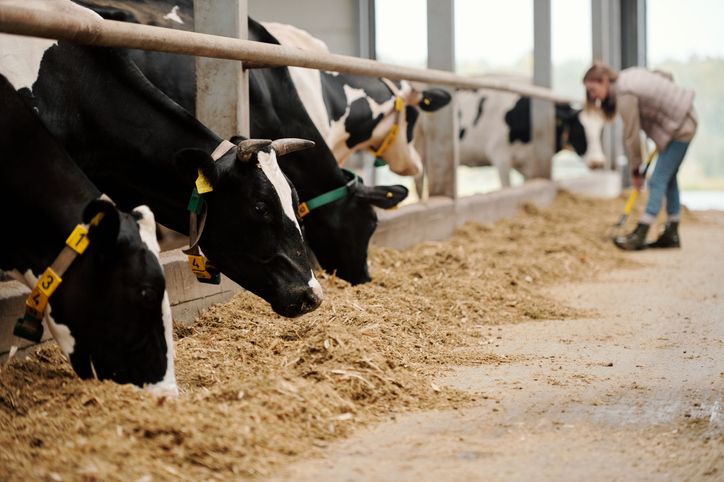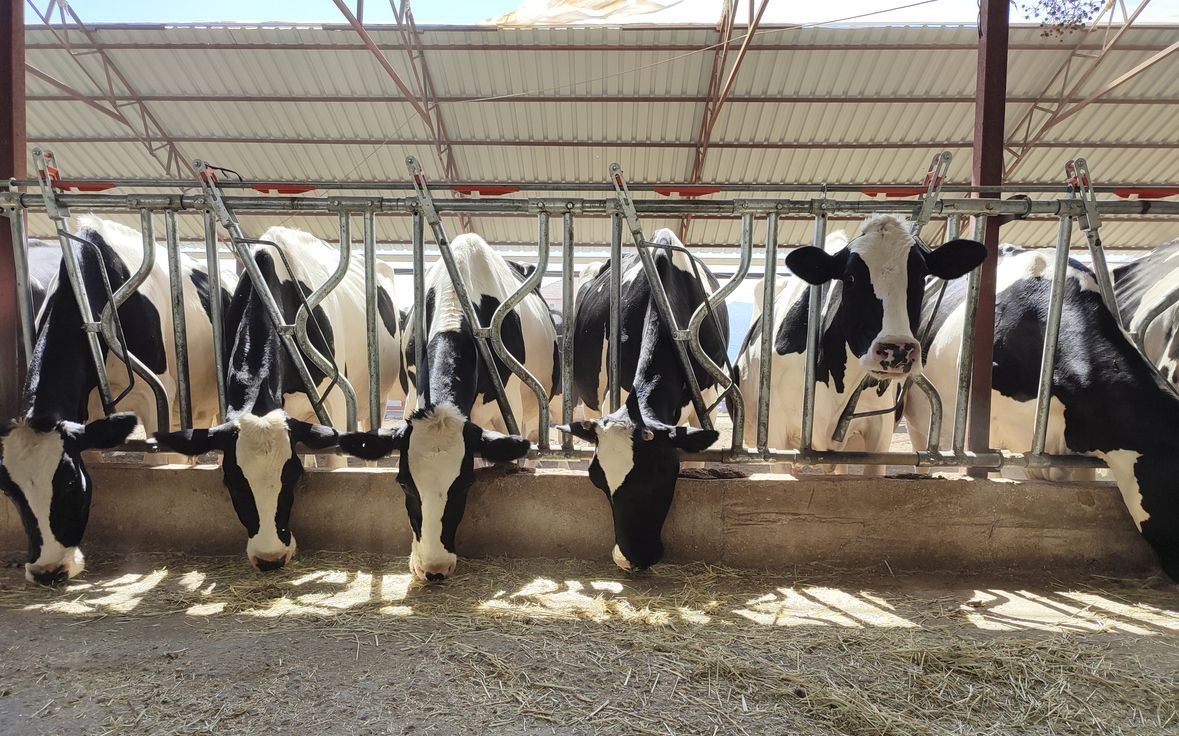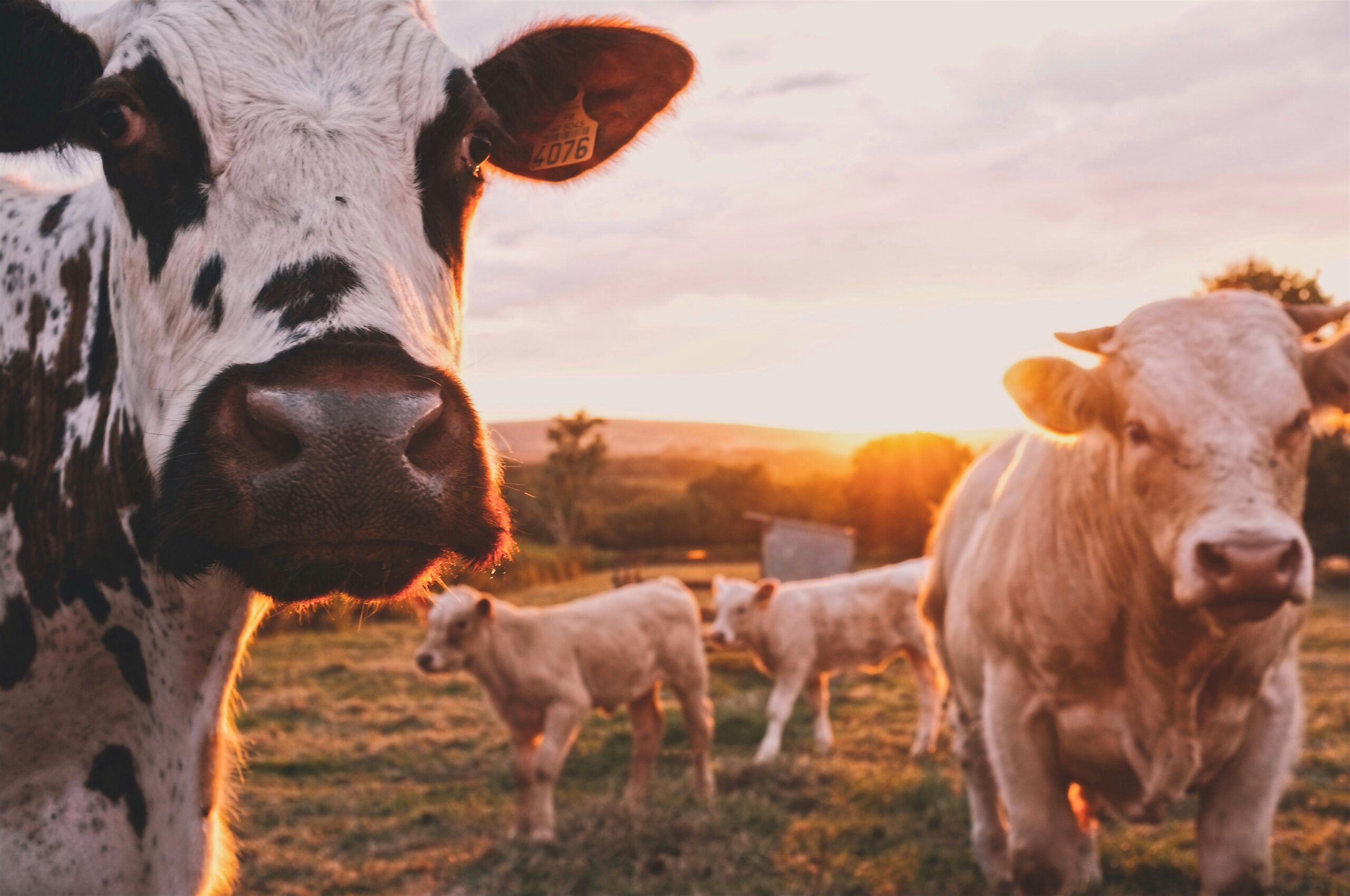Projects
Supporting innovative, cutting edge ideas, the Research Innovation Fund (RIF) provides seed grants for cross-college collaborative projects.
How do I apply?
Project Description
Media
Filters
- Project Types
- All
- Animal Health
- Aquaculture
- Automation and Robotics
- communities
- Communities/Farmers/Relations
- Computational Modeling
- Controlled Environment Agriculture
- Crop Production
- Dairy/Livestock Production
- Data Integration and Processing
- Farmers
- Farmers, Communities, Relationships
- Food Safety
- International Agriculture
- Iot and Networks
- Machine learning
- Machine Learning
- Plant Breeding
- relations
- Sensing Technology
- Soil
- Trustworthy AI
- Years
- Project Creators

Development of Predictive Models to Accurately Detect Subclinical and Clinical Mastitis in Dairy Cows Milked with Automated Milking Systems
Inflammation of dairy cow mammary glands, or mastitis, is one of the most important diseases in dairy production. Costs related to veterinary service, labor, loss of saleable milk, reduced milk production, and culling make it one of the most costly dairy diseases. In conventional milking systems, detection of clinical mastitis (CM) is straight forward by identification of abnormal milk or a swollen quarter, but subclinical mastitis (SCM) is only identified by a somatic cell count (SCC) ≥ 200,000 cells/mL. Accurate and timely detection of SCM has the potential to improve milk quality and farm economics. We propose to develop predictive models to accurately detect clinical mastitis (CM) and subclinical mastitis (SCM) in dairy cows milked with automated milking systems. These systems automatically provide hundreds of data points from each cow at milking. We will collect quarter level data points, such as milk yield, milking time, duration between milking visits, kick-offs, incomplete milkings, and conductivity, and use them to develop an algorithm for accurate identification of cows at the onset of CM and SCM. Not only will this provide a substantial economic benefit by reducing the costs associated with mastitis, but it will also improve animal welfare. While automated milking systems are still rare in the dairy industry, there is a projected annual increase of 20 to 30% in the coming years, in part as a way of addressing the current labor challenges in the dairy industry. New York State is seen as a leader in the dairy industry both locally, regionally, and globally and development of an algorithm for accurate identification of cows with CM or SCM will keep New York State on the leading edge of adoption of agriculture technology.
Rick Watters (CVM), Kristan Reed (CALS)

Optimization of The Milk Harvesting Process Through Automation and Data Integration
Adequate udder stimulation of dairy cows before milking is critical for the harvest of high-quality milk, traditionally achieved through milk stripping by hand. To date, dairy operations apply a fixed pre-milking stimulation regimen to all cows, irrespective of their physiological needs. This results in delayed milk ejection (DME) in approx. 25% of cows on New York State dairies. Delayed milk ejection leads to poor milking efficiency, impaired teat and udder health, and reduced milk yield. We estimate that DME results in an income loss of approx. $250,000/year on a 1,000-cow dairy. Accommodating the physiological requirements of individual cows in a precision dairy farming system is of utmost importance to optimal milk harvest and animal well-being. To achieve this, a new dimension for automated identification of cows with DME and providing them with additional pre-milking stimulation using automated pre-milking stimulation (APS) systems is critical.
Matthias Wieland (CVM), Julio Giordano (CALS), Paul Virkler (CVM)

What Can Rumination Time Tell Us About the Blood Calcium Status of Early Lactation Dairy Cattle?
Subclinical hypocalcemia (SCH) affects over 40% of multiparous dairy cows in early lactation. Arising from a drop in blood calcium (Ca) after calving due to the increased demand for Ca to support lactation. Delayed or prolonged episodes of SCH are associated with decreased production and feed intake, increased risk of additional diseases, and herd removal. Previous reports have shown that daily rumination time (RT) is positively correlated with blood Ca in the early lactation period. As many farms have already implemented sensors to track RT of cows, the results of our study can be incorporated into the preexisting software as an alarm, providing a practical method of identifying cows experiencing delayed or prolonged SCH. By identifying these cows either before or as they are experiencing reductions in blood Ca, more targeted treatment and management strategies can be implemented to reduce the risk of additional disease development, thus improving cow health and productivity as well as farm profitability.
Claira Seely (CVM); Jessica McArt (CVM); Julio Giordano (CALS)

Automating management of teat tissue condition in dairy cows through machine learning
Mastitis, a significant concern in the dairy industry due to marked reduction in milk production and the reduced immune system for dairy cattle, is assessed through physical examinations of a dairy cow’s teat health. This costly, time-consuming approach is error prone and labor intensive. This project proposes first to use a multi-modality machine learning system to measure for short term changes in teat tissue while also developing an image and video based deep learning classifier to predict long-term changes. The sensitivity and specificity of the machine learning system will be compared with the traditional, manual approach. Results will potentially impact current milk harvesting strategies, the advancement of udder health, animal well-being, and sustainability of farms with local impact in the NYS dairy industry and across the globe.
Basran (CVM), K. Weinberger (CIS), I. Porter (CVM), M. Wieland (CVM), J. Giordano (CALS)

ReproPhone and e-Synch: Novel Tools to Automate and Optimize Cattle Reproductive Management
Main goals are to develop; 1) e-Synch; an intravaginal reusable device to automate synchronization of ovulation and monitor physiology of cows and 2) ReproPhone; a user-friendly, rapid, low-cost tool to determine pregnancy and ovarian status of cows on-farm. The e-Synch consists of an electronically controlled device loaded with products to synchronize ovulation and sensors to monitor cow activity and temperature. Briefly, user inserts e-Synch and selects desired treatment with a mobile app. Next, e-Synch automatically delivers hormones required for the selected protocol. Once protocol is completed, e-Synch is removed and the cow is inseminated. On the other hand, ReproPhone consists of a lateral flow immunoassay (LFIA) to quantify circulating reproductive hormones coupled with a portable imaging device connected to a mobile app. Specific activities: 1) Evaluate efficacy of e-Synch. Conduct field trials to evaluate the ability of current prototype to deliver hormones used for synchronization of ovulation. Based on initial tests we will work with Dr. Erickson’s group to improve the design and function of the device. 2) Optimize current LFIA. Currently our LFIA and reading system is designed to test plasma samples, which is not ideal for on-farm implementation, as samples need to be processed before testing. Therefore, I will work on modifying current format to measure hormones in unprocessed whole blood samples. Activities include laboratory experiments and on-farm testing.
Magdalena Masello Souza (GR- CALS), Primary Advisor: Julio Giordano (CALS), Secondary Advisor: David Erickson (COE)
- ALL
- Computational Modeling
- Data Integration and Processing
- Machine Learning
- Automation and Robotics
- Sensing Technology
- Iot and Networks
- Trustworthy AI
- Plant Breeding
- Crop Production
- Controlled Environment Agriculture
- Soil
- Dairy/Livestock Production
- Aquaculture
- Food Safety
- Animal Health
- International Agriculture
- Communities/Farmers/Relations
Become a Fellow
Stay up to Date
If you have a disability and are having trouble accessing information on this website or need materials in an alternate format, contact [email protected] for assistance.
CIDA Copyright 2023 | CIDA is an equal opportunity employer | Terms of Use | Privacy Policy